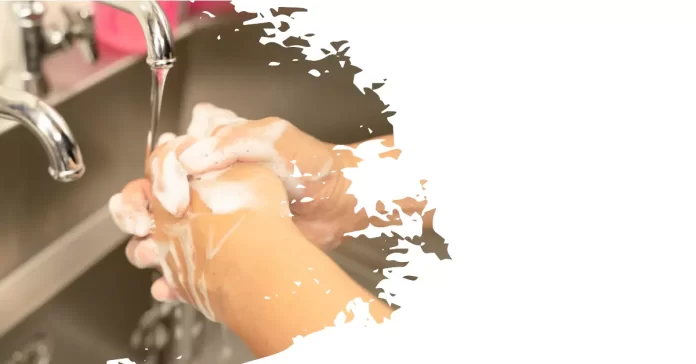Dogs are often our closest companions, bringing us joy and comfort. But sometimes, unexpected situations like a dog bite can happen. After a dog bite, the primary concern is the risk of rabies, a severe illness. This article will guide you through essential steps to ensure your safety and prevent rabies to protect your community. These steps are necessary for your protection and preventing rabies, so let’s learn what to do if bitten by a dog to stay safe and protect our communities.
Here are Eight Essential Steps if a Dog Bites You
Clean the Wound Thoroughly
The first thing to do after a dog bite is to clean the wound properly. Wash the affected area for at least five minutes using mild soap and lukewarm water. This cleansing helps remove bacteria and reduce the risk of infection. Avoid harsh chemicals or hydrogen peroxide since they can harm the tissue.Control Bleeding (If Applicable)
If the bite has caused bleeding, apply gentle pressure with a clean cloth or sterile bandage to stop it. Elevate the wounded area if possible, as this can help minimize bleeding and swelling.Seek Medical Attention
Seek immediate medical attention, regardless of the bite’s severity. Dog bites can introduce harmful bacteria into your body, and there’s also the risk of rabies transmission. A medical professional will assess the wound, clean it thoroughly, and determine if you need stitches or antibiotics to prevent infection.Report the Bite
Inform your local animal control authorities about the dog bite incident. This step is crucial for tracking and managing potentially rabid animals. It helps protect others from potential exposure to rabies.Rabies Evaluation
Your healthcare provider will assess the situation and decide whether a rabies vaccination is necessary. Rabies is a crucial disease transmitted through infected animal saliva. Timely vaccination can prevent the onset of rabies if the dog is rabid.Follow Medical Guidance
If the healthcare provider recommends a rabies vaccination, follow their guidance without hesitation. Rabies vaccinations are preventive measures and are highly effective when given promptly. Multiple shots may be required, so adhere to the vaccination schedule as prescribed.Monitor for Infection
Monitor the bite wound closely for infection signs. If you notice increased redness, swelling, pain, pus, or a high fever, immediately contact your healthcare provider.Stay Informed
Lastly, stay informed about dog bite prevention. Education is a powerful tool in avoiding such incidents. Learn how to interact safely with dogs, especially those you’re not familiar with, and teach children about proper dog etiquette.
Conclusion
Dog bites can be unfortunate, but taking the correct steps can prevent rabies and complications. Act quickly: clean the wound, seek medical assistance, and adhere to medical guidance. By doing so, you not only protect yourself but also contribute to the broader effort to prevent rabies and ensure the safety of your community.
Frequently Asked Questions (FAQs)
What should I do immediately after a dog bite?
Clean the wound with mild soap and water for at least five minutes, seek medical help, report the bite, and follow medical advice promptly.
Can any dog transmit rabies, or are certain breeds more prone to it?
Any dog, regardless of breed, can transmit rabies if infected. There’s no breed predisposition to carrying the rabies virus; a dog’s ability to transfer rabies hinges on whether it has encountered the virus via a bite from another infected animal.
How do I identify if a dog is rabid?
Identifying a rabid dog can be challenging, but signs may include aggression, excessive salivation, erratic movements, and difficulty swallowing.
What is the rabies vaccination process for dogs, and is it effective?
Yes, rabies vaccines for dogs are highly effective in preventing the disease.
Can I use home remedies after a dog bite?
You can use basic first aid at home to clean the wound with mild soap and lukewarm water for at least five minutes. However, these home remedies should not replace professional medical evaluation and treatment, especially for potential rabies exposure.
How long does it take for rabies symptoms to appear in humans?
Rabies symptoms in humans typically appear within one to three months after exposure to the virus, although they can manifest as soon as a week or as long as several years after the bite.
What should you do if a dog bite happens in a remote area without easy access to medical assistance?
If you experience a dog bite in a remote area with no nearby medical help, clean the wound with soap and water for five minutes, apply pressure to the bleeding with a clean cloth, and seek medical assistance as soon as possible.
- Breaking Down Rabies: Causes, Symptoms, Treatment and Prevention
- Is Coconut Water the Solution to Your Weight Loss Goals?
- How to Beat Arthritis: Effective Ways to Improve Joint Pain
- 10 Proven Dengue Prevention Tips to Stay Safe from Mosquitoes
Effective Rabies Therapy
When dealing with rabid dogs, it’s crucial to weigh the risks and benefits for patients, clinical staff, and the public (Frontiers in Veterinary Science). Humane euthanasia and testing of suspect rabid animals are essential to reduce the risk of rabies transmission and inform the management of exposed individuals and animals. Current diagnostic methods for rabies can sometimes yield false-negative results, so extreme caution and vaccination are necessary when handling these cases.










